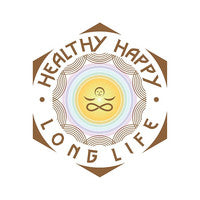What? Juvenile arthritis? Yes, it’s true that arthritis is not just for old people. There are around 300,000 American children under the age of 16 who are suffering from Juvenile Arthritis (JA).
Although it’s also called arthritis, it’s not the same aches and pains that grandmas and grandpas experience. Children with juvenile arthritis suffer from different kinds of autoimmune arthritis. Their joints are being attacked by their immune system, making the joints swell and become stiff. If left untreated, this can cause immobility, blindness, permanent damage to joints, and death.
Types of JA:
Juvenile arthritis is not a particular disease. It is a term used to describe various types of inflammatory and arthritic diseases that are often autoinflammatory. Autoimmune or autoinflammatory happens when something goes wrong with the immune system and it starts attacking healthy cells and tissues. JA has no known cause but scientists believe that when activated by bacteria, viruses, or other external elements, certain genes may cause JA. The most common types of juvenile arthritis include:

Juvenile Idiopathic Arthritis (JIA) - is the most common type of JA. There are seven kinds of JIA: Systemic JIA, Aligoarthritis, Polyarthritis - rheumatoid factor negative, Polyarthritis - rheumatoid factor positive, Psoriatic Arthritis, Enthesitis - related, and Undeffirentiated.
Juvenile Lupus - affects the skin, joints, and internal organs such as the kidneys, heart, and lungs. It can also affect other parts of the body.
Juvenile Myositis - this can cause muscle weakness. There are 2 types of juvenile myositis, these are juvenile polymyositis and juvenile dermatomyositis which can also cause rashes in the knuckles and eyelids.
Juvenile Scleroderma - a rare chronic disorder that skin and connective tissues. It is characterized by the tightening and hardening of the skin.
Juvenile Vasculitis - this causes the swelling and constricting of the blood vessels that can lead to organ damage and in worst cases, death. Henoch-Schonlein purpura and Kawasaki disease are the most common vasculitides in teens and kids.
Juvenile Fibromyalgia (JFM) - is a chronic musculoskeletal pain disorder that also affects sensory, cognitive, and autonomic functions. It causes widespread muscle stiffness and pain, fatigue, and disturbed sleep. Girls are more likely to suffer from this disorder than boys. Most adolescents diagnosed with JFM continue to suffer from symptoms up until adulthood.

Signs and Symptoms of JA:
- Joint stiffness
- Joint inflammation
- Joint pain
- Limping
- Fatigue
- Irritability
- Skin rashes
- Hardened skin patches
- Eye redness
- Eye dryness
- Eye pain
- Light-sensitive eyes
- Blurred vision
- Loss of appetite
- Weight loss
- Diarrhea
- Bloating
- Difficulty in breathing
- Fever
- Immobility
Diagnosis:
Diagnosis of JA can be difficult at times because some children have no symptoms or have symptoms that are similar to other conditions. Since there is no actual test for JA, tests for disorders with similar symptoms are done to reach a diagnosis.
Parents are usually referred to a doctor who specializes in treating arthritis in children. These doctors are called pediatric rheumatologists. The doctor will likely start by asking for the child’s medical history, when the signs started showing, and how long the symptoms lasted. The doctor will also ask about the patient’s family history then perform a complete medical examination. The tests needed might include the following:

Complete blood count (CBC) - this includes red blood cells (RBC), white blood cells (WBC), and platelets (PLTs)
Urinalysis - a urine test that is used to detect and control a broad range of disorders.
X-rays - creates images of the inside of the body to help eliminate damage to the bone.
MRI -magnetic resonance imaging scan produces detailed images of the inside of the body.
Blood culture - used to test for bacteria that could show if there is an infection in the bloodstream.
Test for Lyme disease
Bone marrow test - bone marrow biopsy used to test for leukemia.
Test for viruses
Erythrocyte sedimentation rate (sed rate or ESR) - this test indirectly gauges the level of inflammation inside the body.
Rheumatoid factor tests - a series of tests mainly used to help diagnose rheumatoid arthritis.
Antinuclear antibody test - ANA test can help in diagnosing autoimmunity and provide helpful information to pinpoint the exact autoimmune disorder the patient has.
Bone scan - this test identifies changes in the joints and bones. This test is required if there is unexplained skeletal pain.
Synovial fluid and tissue analysis - these tests will further help your doctor identify the primary cause of the swelling and inflammation.

Treatment :
There is no cure for juvenile arthritis but with early detection and proper treatment, remission is possible. The treatment aims to slow down the disease, prevent progression, relieve pain, lessen swelling, increase mobility, boost strength, prevent joint and organ damage, and avoid having complications.
Medications:
Nonsteroidal anti-inflammatory drugs (NSAIDs) - used for treating swelling and pain.
Slow-acting anti-rheumatic drugs (SAARDs) - used for treating swelling and pain over time. It usually takes a few weeks or more to take effect. They are also known as disease-modifying anti-rheumatic drugs or DMARDs.
Corticosteroids - usually given as an injection, corticosteroids are used for treating swelling and pain. In some cases, the doctor might advise the patient to take oral steroids.
Antimetabolites - when NSAIDs become ineffective, antimetabolites are given as an aggressive medication to help prevent more joint damage and maintain joint function.
Exercise - joint-friendly and low-impact exercises such as walking, biking, yoga, and swimming can help in managing JA.
Physical therapy - can help improve the patient’s quality of life.
Children with JA do the same stuff as other children do. Knowing more about JA and taking proper medications can help a lot in making them live a normal life.
You might also be interested to read Best Home Cleaning Products For Healthy Living and Is Stress Causing Your Lower Back Pain?

